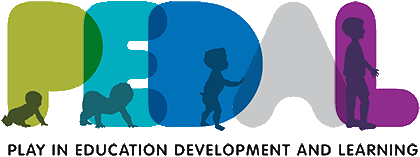It is the third week that Ms. Sotto’s preschool classroom has been turned into an airport. The literacy center is a ticket counter, with a travel agency complete with child-made passports, tickets, and travel brochures. What is happening in Ms. Sotto’s classroom is an example of what most early childhood educators mean when they talk about make-believe play–a fantasy world created by children where their imagination soars, their language expands, and their social skills develop. Mature make-believe play is an important and unique context, providing opportunities to learn not afforded by other classroom activities. It should not be considered something extra that can be cut to accommodate more time for academic skills, nor should it be used as a means of adding “entertainment value” for inherently boring and decontextualized drills. Instead, play should be preserved and nurtured as one of the “uniquely preschool” activities that provide the most beneficial context for children’s development.
